
How to Use multiplexer: Examples, Pinouts, and Specs
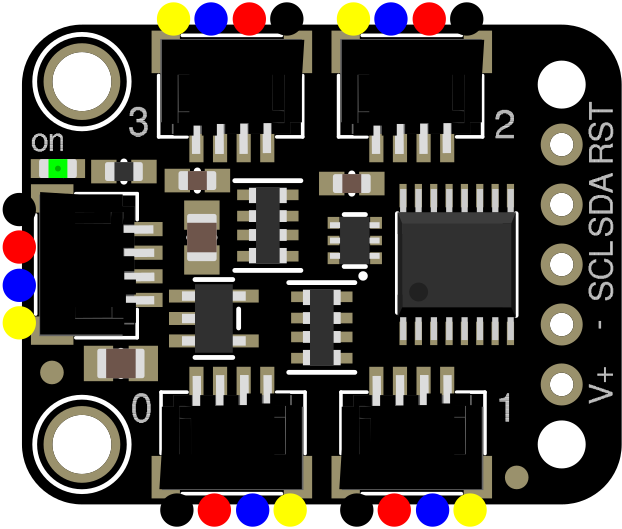
 Design with multiplexer in Cirkit Designer
Design with multiplexer in Cirkit DesignerIntroduction
A multiplexer, often abbreviated as "MUX," is an electronic component that selects one of several input signals and forwards the selected input to a single output line. It acts as a data selector, enabling efficient routing of signals in digital and analog circuits. Multiplexers are widely used in communication systems, data acquisition, signal processing, and microcontroller-based projects.
Explore Projects Built with multiplexer
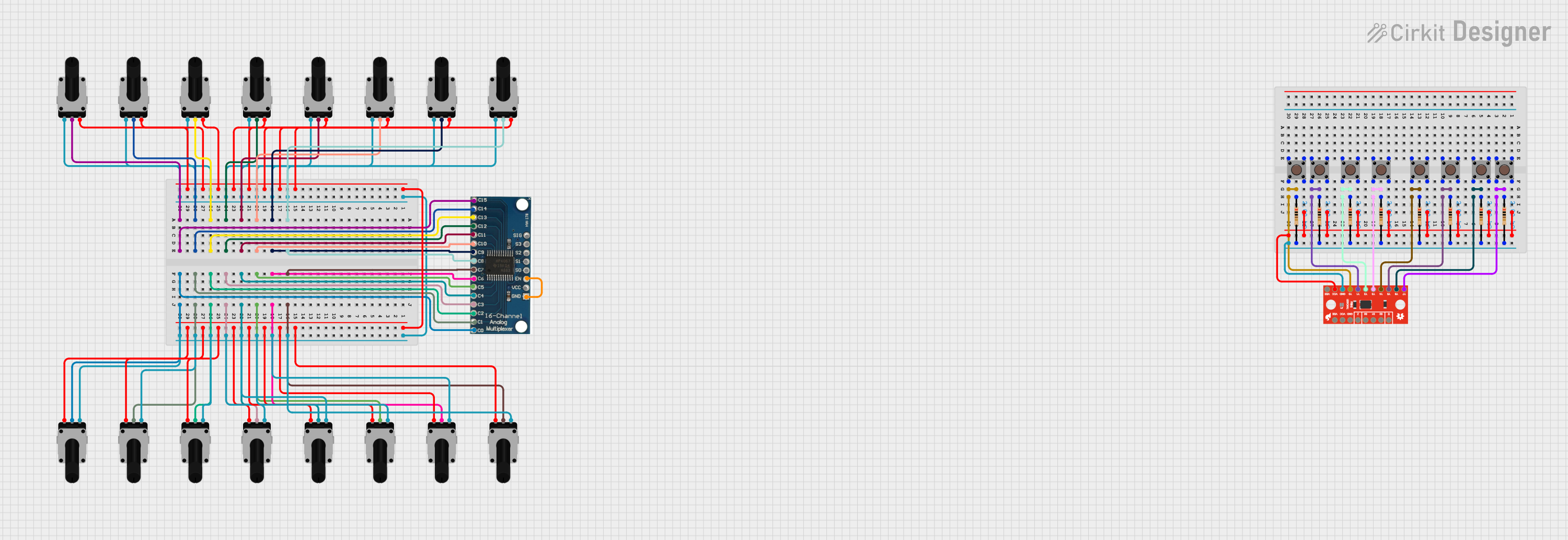
 Open Project in Cirkit Designer
Open Project in Cirkit Designer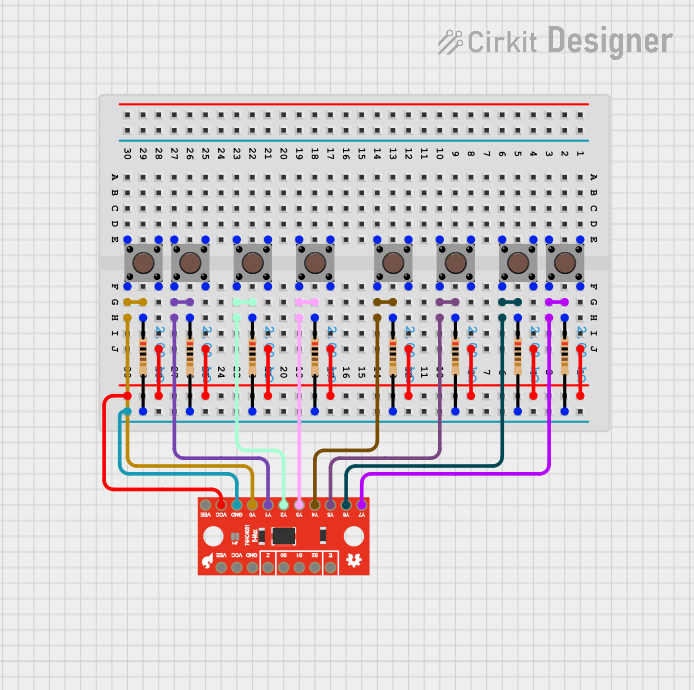
 Open Project in Cirkit Designer
Open Project in Cirkit Designer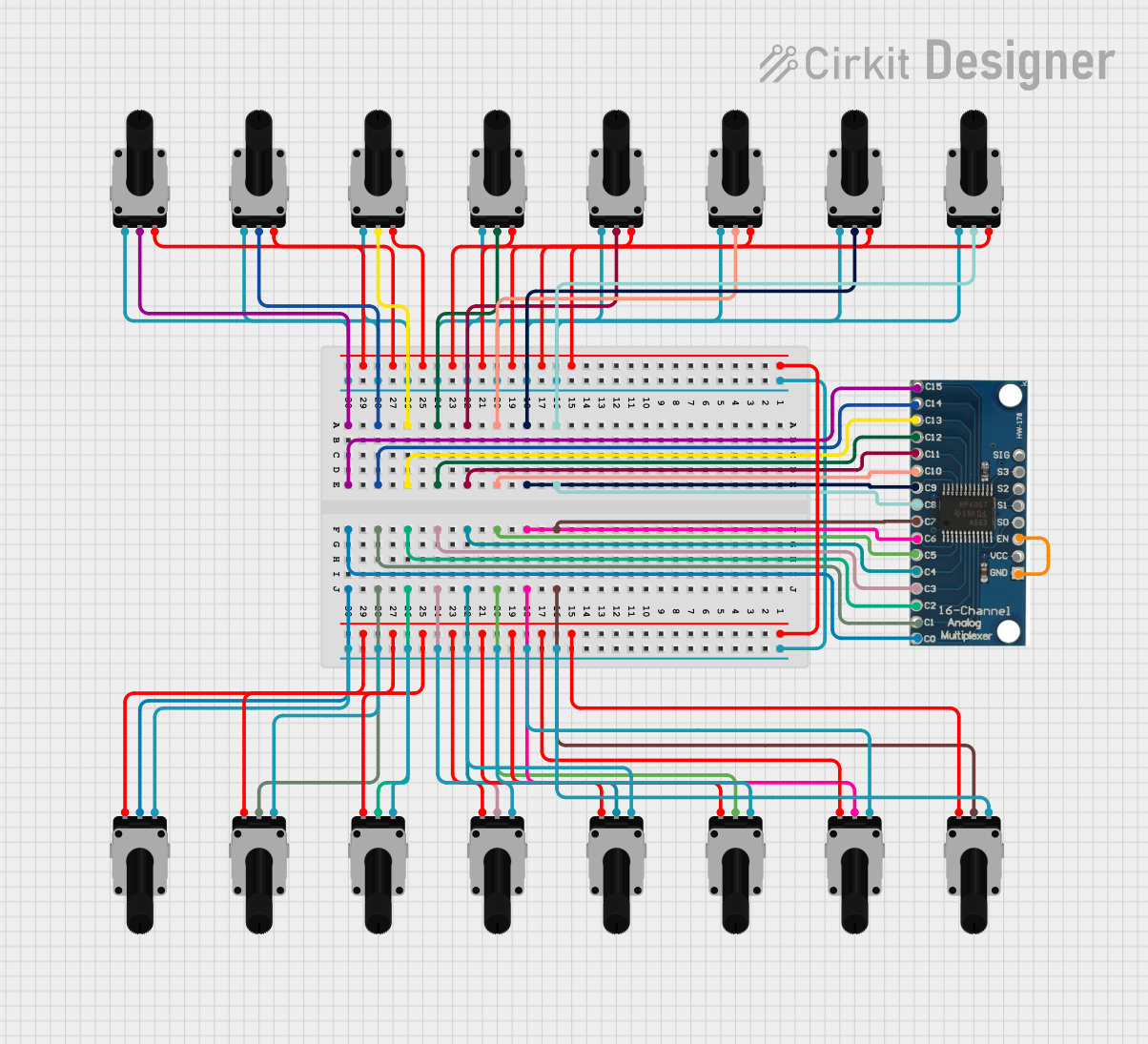
 Open Project in Cirkit Designer
Open Project in Cirkit Designer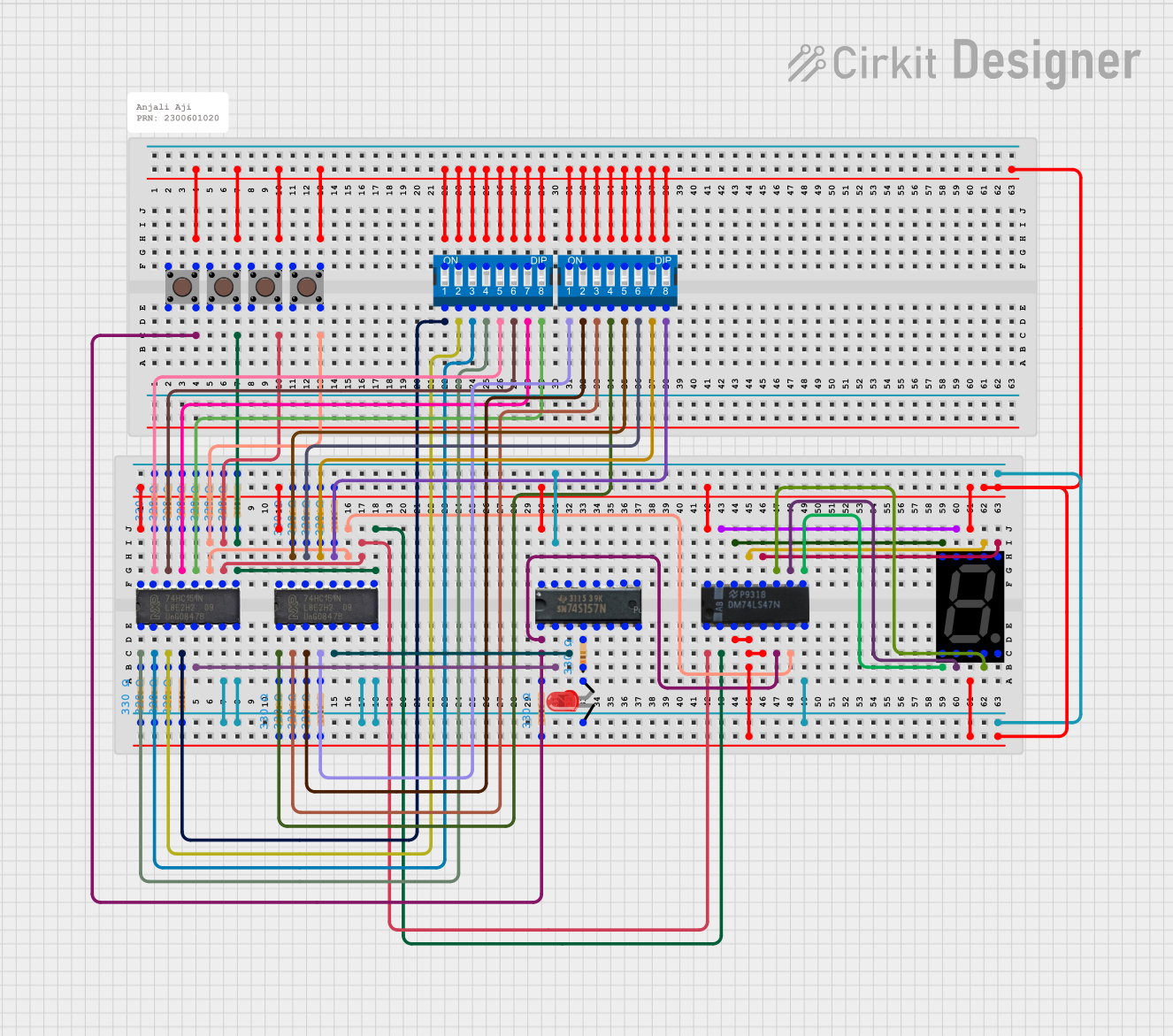
 Open Project in Cirkit Designer
Open Project in Cirkit DesignerExplore Projects Built with multiplexer

 Open Project in Cirkit Designer
Open Project in Cirkit Designer
 Open Project in Cirkit Designer
Open Project in Cirkit Designer
 Open Project in Cirkit Designer
Open Project in Cirkit Designer
 Open Project in Cirkit Designer
Open Project in Cirkit DesignerCommon Applications and Use Cases
- Data Routing: Directing multiple data streams to a single output channel.
- Signal Selection: Choosing between multiple analog or digital signals.
- Microcontroller I/O Expansion: Increasing the number of input/output pins available.
- Communication Systems: Managing multiple data channels in networks.
- Digital Logic Circuits: Implementing logic functions and reducing circuit complexity.
Technical Specifications
Below are the general technical specifications for a typical 4-to-1 multiplexer (e.g., 74HC157):
Key Technical Details
- Supply Voltage (Vcc): 2V to 6V (typical: 5V)
- Input Voltage Range: 0V to Vcc
- Propagation Delay: ~10ns to 30ns (varies by model and supply voltage)
- Power Consumption: Low power CMOS technology
- Control Inputs: Select lines and enable pin
- Output Current: ±6mA (typical for logic-level outputs)
Pin Configuration and Descriptions
The following table describes the pinout for a 4-to-1 multiplexer (e.g., 74HC157):
| Pin | Name | Description |
|---|---|---|
| 1 | A | Data input A (first input channel) |
| 2 | B | Data input B (second input channel) |
| 3 | C | Data input C (third input channel) |
| 4 | D | Data input D (fourth input channel) |
| 5 | S0 | Select line 0 (used to choose the input channel) |
| 6 | S1 | Select line 1 (used to choose the input channel) |
| 7 | Enable (EN) | Active-low enable pin (must be LOW for the multiplexer to function) |
| 8 | GND | Ground connection |
| 9 | Y | Output (selected input is forwarded to this pin) |
| 10 | Vcc | Positive power supply |
Usage Instructions
How to Use the Component in a Circuit
- Power the Multiplexer: Connect the Vcc pin to a suitable power supply (e.g., 5V) and the GND pin to ground.
- Connect Input Signals: Attach the input signals to the data input pins (A, B, C, D).
- Set the Select Lines: Use the select lines (S0, S1) to choose which input signal is forwarded to the output. The binary combination of S0 and S1 determines the selected input:
S1 S0 = 00: Input A is selected.S1 S0 = 01: Input B is selected.S1 S0 = 10: Input C is selected.S1 S0 = 11: Input D is selected.
- Enable the Multiplexer: Ensure the enable pin (EN) is set to LOW. If EN is HIGH, the output will be disabled (high-impedance state).
- Read the Output: The selected input signal will appear on the output pin (Y).
Important Considerations and Best Practices
- Signal Integrity: Ensure that the input signals are within the voltage range specified in the datasheet to avoid damage or incorrect operation.
- Decoupling Capacitor: Place a 0.1µF capacitor near the Vcc pin to reduce noise and stabilize the power supply.
- Unused Inputs: Tie unused input pins to ground or Vcc to prevent floating inputs, which can cause unpredictable behavior.
- Enable Pin: Always control the enable pin properly to avoid unintentional disabling of the multiplexer.
Example: Connecting a Multiplexer to an Arduino UNO
Below is an example of how to use a 4-to-1 multiplexer with an Arduino UNO to select between four analog signals:
Circuit Connections
- Connect the multiplexer Vcc to the Arduino 5V pin and GND to the Arduino GND.
- Connect the select lines (S0, S1) to Arduino digital pins 2 and 3, respectively.
- Connect the enable pin (EN) to Arduino digital pin 4.
- Connect the input signals (A, B, C, D) to analog signal sources.
- Connect the output pin (Y) to Arduino analog pin A0.
Arduino Code
// Define pin connections
const int S0 = 2; // Select line 0
const int S1 = 3; // Select line 1
const int EN = 4; // Enable pin (active LOW)
const int outputPin = A0; // Multiplexer output
void setup() {
// Set select and enable pins as outputs
pinMode(S0, OUTPUT);
pinMode(S1, OUTPUT);
pinMode(EN, OUTPUT);
// Enable the multiplexer
digitalWrite(EN, LOW);
// Initialize serial communication for debugging
Serial.begin(9600);
}
void loop() {
for (int i = 0; i < 4; i++) {
// Set the select lines to choose the input channel
digitalWrite(S0, i & 0x01); // Set S0 to the least significant bit of i
digitalWrite(S1, (i >> 1) & 0x01); // Set S1 to the most significant bit of i
// Read the selected input signal
int signalValue = analogRead(outputPin);
// Print the signal value to the serial monitor
Serial.print("Input ");
Serial.print(i);
Serial.print(": ");
Serial.println(signalValue);
delay(500); // Wait for 500ms before reading the next input
}
}
Troubleshooting and FAQs
Common Issues and Solutions
No Output Signal:
- Ensure the enable pin (EN) is set to LOW.
- Verify that the select lines (S0, S1) are configured correctly.
- Check the power supply connections (Vcc and GND).
Incorrect Output Signal:
- Confirm that the input signals are within the specified voltage range.
- Check for loose or incorrect wiring.
- Ensure that unused input pins are tied to ground or Vcc.
High Noise or Unstable Output:
- Add a decoupling capacitor (0.1µF) near the Vcc pin.
- Minimize the length of wires to reduce noise pickup.
FAQs
Q: Can I use a multiplexer for analog signals?
A: Yes, many multiplexers (e.g., CD4051) support analog signals. Ensure the selected multiplexer is designed for analog use and operates within the required voltage range.
Q: How many input channels can a multiplexer handle?
A: Multiplexers are available in various configurations, such as 2-to-1, 4-to-1, 8-to-1, and 16-to-1. Choose a model that meets your application requirements.
Q: What happens if the enable pin is left floating?
A: Leaving the enable pin floating can cause unpredictable behavior. Always tie it to a defined logic level (LOW to enable, HIGH to disable).